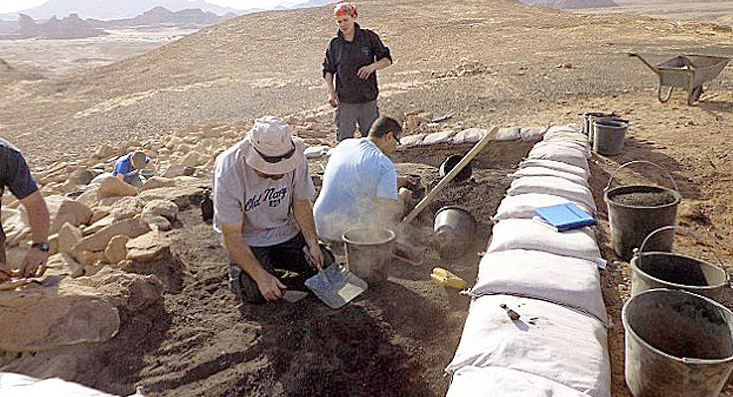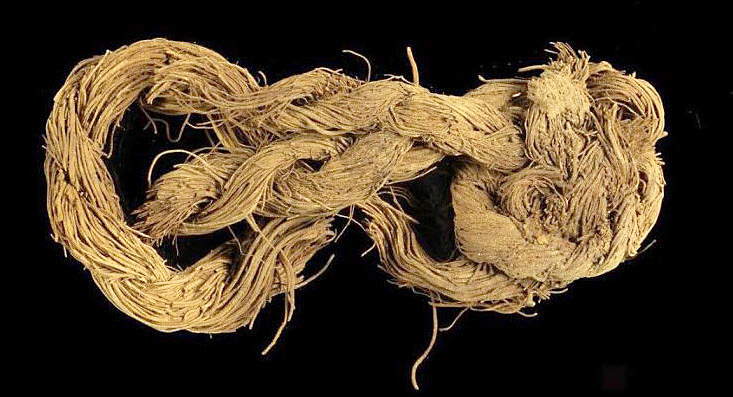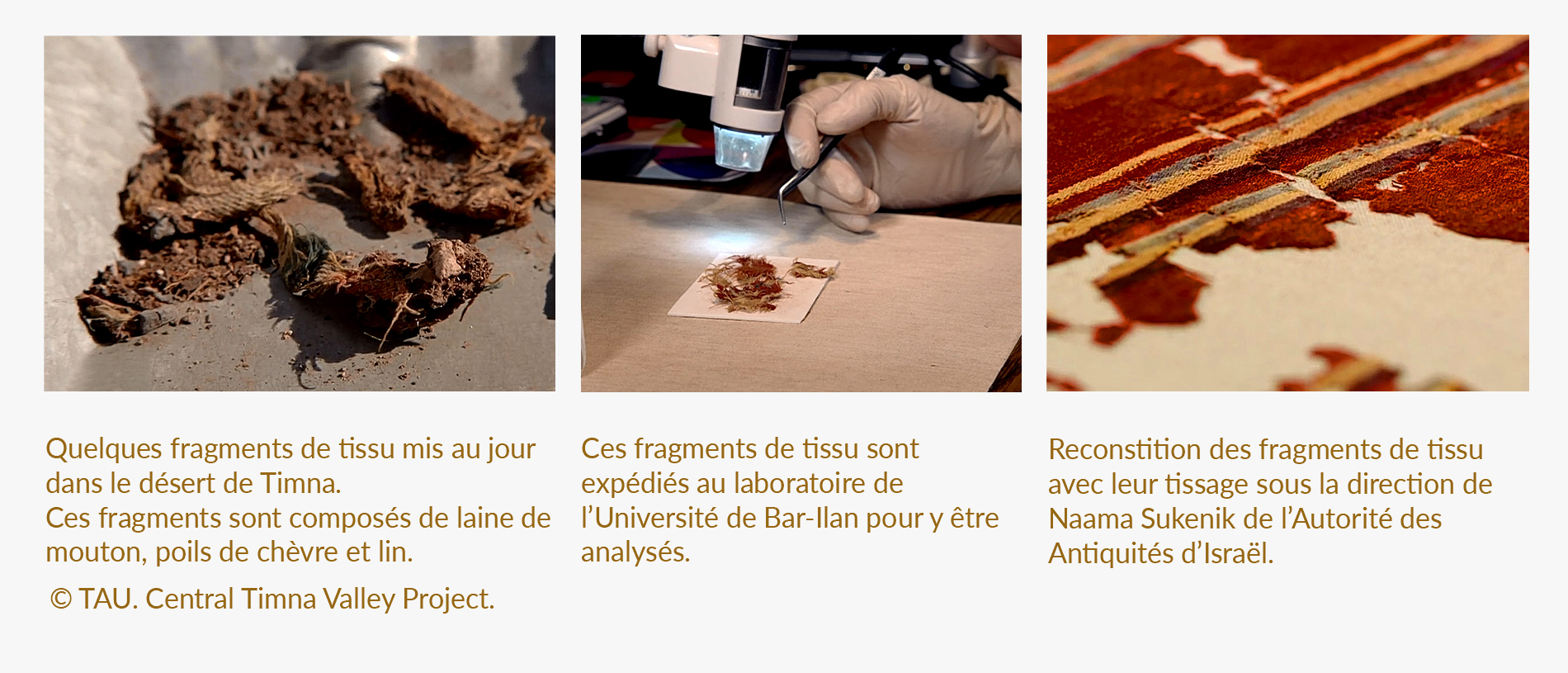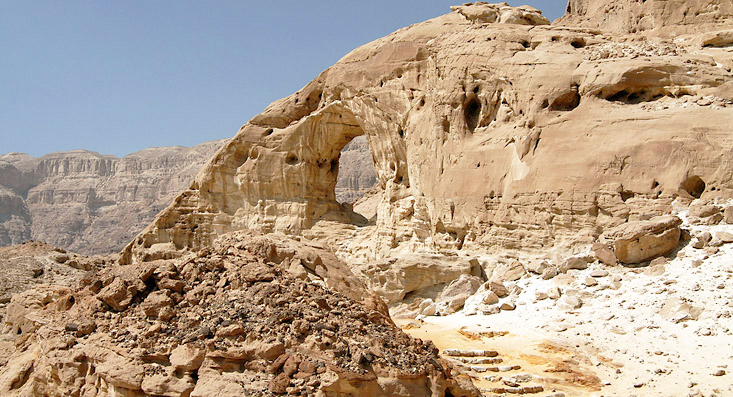
Bible, History, Archaeology
Bible,
History,
Archaeology
Tissue fragments
dating from the 10th century BC.
Contents:
Introduction – Image of the Timna website – Presentation – Sheep's wool... – Surprising quality

Image opposite: Tel Aviv University's archaeological excavation team at the Timna site © TAU. Central Timna Valley Project.
According to the researchers, Prof. Erez Ben-Yossef of Tel-Aviv University and Dr. Naama Sukenik of the Israel Antiquities Authority, these fabrics, the only ones from this period discovered in the Levant, shed a first light on clothing from the biblical period. Department of Archaeology, Tel Aviv University.
Timna National Park is a national park in Israel's Negev region, in a 60 km2 horseshoe-shaped valley 25 km north of Eilat, off Highway 90. The valley is crossed by the Israel National Trail, the hiking trail that runs from one end of the country to the other. © travelfoto.
Presentation

Image opposite: a rope made from the fiber of a date palm found at the Timna site © Clara Amit / Israel Antiquities Authority.
According to the Bible, the Timnah copper mines were operated by Edomites (Deuteronomy 8,9) under the control of Jerusalem [...]. Scholars believe that a military garrison from Jerusalem must have been stationed in the area, with the role of supervising copper mining, defending the site and collecting taxes from the Edomites.
Sheep's wool, goat's hair and linen

Image opposite: two colors for dyeing fabrics: red and blue. The red dye came from a plant called madder, while the blue came from a plant known as dyer's woad. Clara Amit/Israel Antiquities Authority.

Image opposite: an undyed woollen fabric found at the Timna site. This type of fabric is dated to the Iron Age. © Clara Amit / Israel Antiquities Authority.
In addition to the pieces of clothing, other fabrics from bags and saddles were also discovered at the site. All these pieces have been transferred to the archaeological laboratory at Bar Ilan University.

Surprising quality for its time

Image opposite: a view of the Arava Valley, a vast expanse of ochre, orange and copper-colored desert. Located some 30 km north of the Gulf of Eilat. timna-park.co.il.

Image opposite: a view of the Arava valley and its surprising rock formations: arches, «geological mushrooms», King Solomon sandstone columns, etc. © timna-park.co.il.
These rare pieces of fabric join an exceptional collection of well-preserved organic objects recently discovered at Timna by Prof. Ben-Yosef's archaeological mission, including pieces of tanned leather, ropes, braids, cereal seeds and fruits of the «seven species» of the land of Israel named in the Torah: wheat, barley, grapes, figs, pomegranates, olives and honey. «The rare preservation of organic matter at Timna opens a window onto a new world, previously totally absent from sites from the biblical period. It opens up new avenues of research, such as the study of ancient DNA or the reconstruction of the process of animal domestication».
 Image opposite: a view of the Arava valley and its surprising rock formations: arches, «geological mushrooms», «King Solomon» sandstone columns, etc. © timna-park.co.il.
Image opposite: a view of the Arava valley and its surprising rock formations: arches, «geological mushrooms», «King Solomon» sandstone columns, etc. © timna-park.co.il.
Prof. Ben-Yosef points out that «this is the closest we have to an example of how people dressed in the time of David and Solomon». «We can assume that this society in the Arava Valley in the 10th century B.C. wove and dressed in the same way as in Jerusalem. If the region was indeed dependent on the capital as mentioned in the biblical account, it's quite likely that the fabrics themselves came from there. These are the only textiles from this period to have been discovered in the southern Levant. No fabric samples have ever been found even in Jerusalem [...]».


